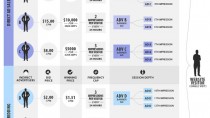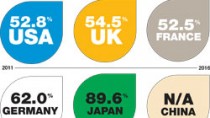RTBの”落とし穴”に気をつけよう(英文)
It’s no secret that Real Time Bidding (RTB) has become an efficient means of connecting digital advertising audience inventory to potential buyers. In fact, it is projected to comprise approximately 27 percent of all online advertising by 2016 according to IDC’s forecast. Compared with buying directly from publishers, RTB has a fraction of the transactional costs while providing audience targeting and scale in an increasingly controlled environment. As a result, a growing portion of the digital ad market is shifting from traditional channels to RTB. Not to mention, direct response marketers have developed strong technologies to leverage the data while enjoying relatively low costs, and publishers have experienced positive results when shifting some of their inventory to this distribution channel. So what’s the problem?
RTB is not a “one size fits all” solution. For brands specifically, the biggest challenges relate to inventory quality, placement control, creative freedom and predictability.
They can best overcome these RTB pitfalls by understanding how and where RTB can be used effectively and by developing strategic and quantitative-focused media buying strategies that align with their respective short- and long-term needs.
RTB Hidden Pitfall #1: Reduced Inventory Quality
Today, most RTB inventory suffers from two primary qualitative problems. First, much of the inventory is comprised of poor ad units with unfavorable placement limitations such as bottom of the page position. Additionally, only standard display options are available, preventing advertisers from driving stronger engagement through rich media formats.
The second issue focuses on advertising fatigue and the relationship between users’ session depth and subsequent declining ad response rate. Specifically, ad response rates decline precipitously for users spending time on a site after their 3rd or 4th impression. The problem is that much of the RTB inventory offered is after the 7th or 8th impression. Brands can assume greater control over session depth placement by engaging with sellers that provide programmatic efficiency and quality through direct performance based campaigns.
RTB Hidden Pitfall #2: Lack of Transparency and Predictability Beyond Audience
While brands that are buying in an open auction environment can usually “see” the audiences they wish to target, they cannot be certain of the inventory they will receive. This lack of transparency can be a stumbling block as brands using RTB lack advance notice regarding the specific publishers, prices, and volume that they will be able to acquire on any given day or week. There is also pervasive unpredictability around which publishers will show the brands’ ads on any given day, when ads will be shown and whether an advertiser will secure their desired inventory due to price fluctuations.
RTB Hidden Pitfall #3: Murky ROI Measurement
Brands often grapple with comparing performance of RTB impressions and evaluating ROI and brand building results due to the volume of changing RTB variables on any given day. In order to achieve reasonable certainty of acquiring the audience needed to achieve campaign reach goals, brands are often buying from hundreds, if not thousands, of sites over the course of a campaign (many of which are declared “brand safe” but have questionable quality). Therefore, measuring the impact of a publisher’s site and content compared with different audience targeting goals is challenging with so many sites, pages and impressions. The best opportunities for gaining insight and measuring ROI into the intersection of site, content and audience necessitate a limited number of sites.
RTB Hidden Pitfall #4: RTB Does Not Equal Programmatic
One of the most critical points to recognize that RTB is not synonymous with programmatic. While both offer the benefits of automating the buying and selling of inventory through standardizing insertion orders, tag management, linking creative tags, campaign management, after campaign reconciliation, payments, etc., developing standards that allow the programmatic connection around these high friction activities is separate from how inventory is ultimately bought and delivered. An advertiser can buy inventory in a fully automated/programmatic method, yet still have the inventory delivered outside of an auction. The emergence of these programmatic guaranteed technologies is growing in popularity along with the success of private exchanges, which mitigate some of the risks of the open RTB world.
While RTB certainly offers valuable benefits to brands — in the form of cheaper ad placements to specific audiences at scale — it also has drawbacks including lack of transparency, predictability, and most important, quality. Integrating RTB as a strategic part of a holistic digital ad campaigns with a balanced and analytical approach using the programmatic buying technologies will help organizations drive better results as well as protect their brands and bottom line.
from:
http://www.adotas.com/2013/03/beware-the-hidden-pitfalls-of-rtb/











